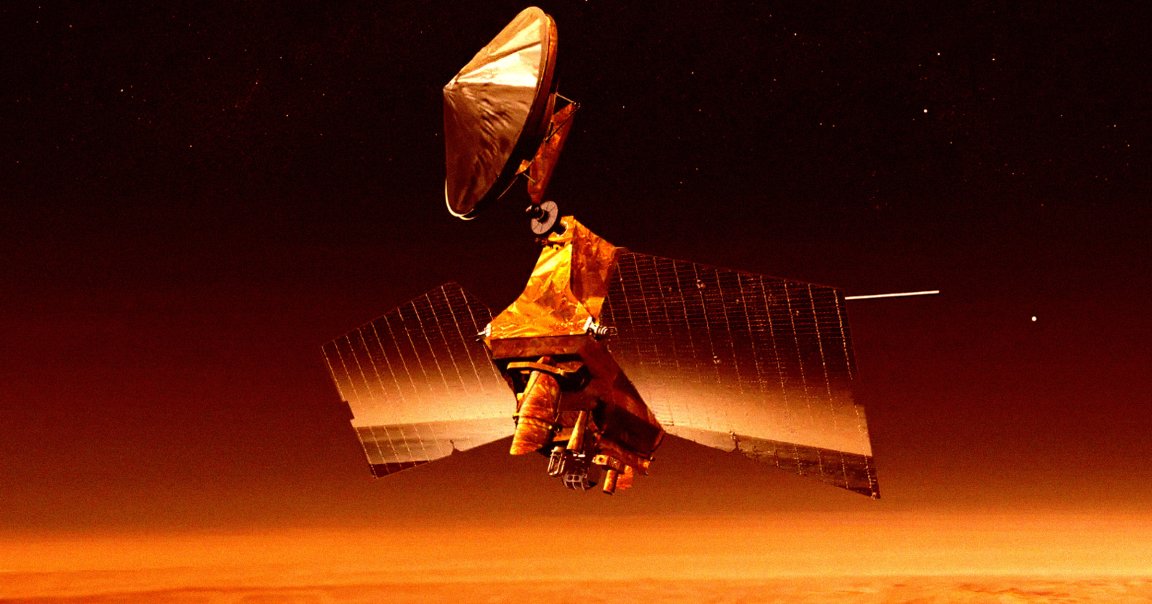
Last month, mysterious interstellar object 3I/ATLAS came within just 18 million miles of Mars during its unusual trajectory through our solar system.
During its approach, NASA’s Mars Reconnaissance Orbiter used its HiRISE camera to take high-resolution images of the rare visitor, which is widely suspected among experts to be a comet. But thanks to a bureaucratic nightmare triggered by the ongoing federal government shutdown, which kicked off just days after the images were taken, scientists have yet to see them over a month later.
Last week, representative Anna Paulina Luna (R-FL) sent a letter to interim NASA administrator Sean Duffy, urging the space agency to release the images, which offer roughly three times the resolution of the object compared to July images taken by NASA’s Hubble Space Telescope.
“This information is of great importance to advancing our understanding of interstellar visitors and their interaction with our solar system,” she wrote. “The brightest pixel in these images will provide our most precise constraint on the object’s size to date.”
Duffy appears to have acknowledged her request — but the outcome isn’t going to make astronomers happy.
“Just had a good conversation with NASA regarding 3I/ATLAS,” she tweeted on Wednesday. “As soon as the government reopens, they’ll be releasing images/data.”
“Unfortunately, due to bureaucratic reasons, they cannot until then,” Luna wrote.
Fortunately, while we await the release of the images, Harvard astronomer Avi Loeb, who has been assisting Luna in her request, pointed out in a blog post today that MRO wasn’t the only spacecraft snapping pictures of the intriguing object. The China National Space Administration (CNSA) released images of the rock taken by its Tianwen-1 Mars Orbiter’s High-Resolution Imaging Camera (HiRIC), which also came within just 18,000 miles of 3I/ATLAS.
“The released HiRIC images show the nucleus and a surrounding coma with a diameter of several thousand kilometers,” Loeb noted, referring to the fuzzy, glowing atmosphere of gas and dust that surrounds a comet’s solid core.
Getting a more accurate, higher-resolution image of 3I/ATLAS could allow us to better estimate the actual size of its nucleus. Per Loeb’s previous calculations, the object could be “anomalously massive,” with a “solid-density nucleus” that “must be larger than [3.1] miles,” and an estimated mass of more than “33 billion tons.”
Apart from being only the third confirmed interstellar object passing through the solar system, 3I/ATLAS has also exhibited some surprising behavior, as Loeb has been painstakingly documenting.
For instance, November 5 images taken by the R. Naves Observatory in Spain show that 3I/ATLAS has no tail, which is highly unusual for a comet that only recently passed its closest point to the Sun, or perihelion.
“Based on momentum conservation, I derived here that the mass fraction lost during the perihelion passage of 3I/ATLAS is larger than 13 percent,” Loeb wrote in a separate blog post. “For a typical comet, this should have resulted in a massive coma with dust and gas that would have been pushed by the solar radiation pressure and the solar wind to the shape of a typical cometary tail pointing away from the Sun.”
“No such tail is visible in the new images from November 5, 2025,” he added.
Whether the latest findings could support Loeb’s far more controversial theory that 3I/ATLAS could be a relic from an extraterrestrial civilization that was “sent towards the inner solar system by design,” though, remains to be seen.
More on 3I/ATLAS: Mysterious Interstellar Object Showing Signs of “Non-Gravitational Acceleration”